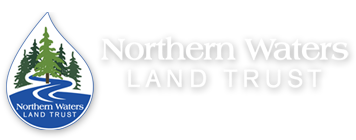Lakes of Biological Significance (LBS)
What are LBS and why are they important?
A Lake of Biological Significance (LBS), as defined by MN DNR researcher Paul Radomski, is a lake that has unique plants or animals such as some aquatic plants, fish, birds, or amphibians (Radomski et al – 2018). Of the 2,235 lakes in our four-county service area (Aitkin, Cass, Crow Wing, and Hubbard), approximately 365 lakes are currently classified as LBS. Like all lakes, LBS can be threatened by development, habitat destruction, changing water temperatures and other factors. These special lakes are further threatened with the loss of the unique plants, fish, or other creatures they sustain.
The MN DNR has assigned biological significance classes (outstanding, high, or moderate), to this group of lakes. Some examples of how a lake would classify as “outstanding” for fish include lakes meeting at least one of the following criteria: self-sustaining walleye, quality northern pike, native muskie, lake trout lake, or cisco (tullibee) refuge lake.
Although muskie stocking can be controversial, naturally producing muskie lakes are rare. Walleyes are not normally controversial in our area – everyone wants more (especially if they could be easier to catch!). However, there are a limited number of self-sustaining walleye lakes in our area. Most lakes require stocking of walleyes by the DNR to maintain a healthy “catchable” population. Lakes with self-sustaining populations, are classified as outstanding LBS.
Lakes in the upper 95th percentile of aquatic plant richness and “floristic quality” for this ecoregion and with a popula tion of endangered or threatened plant species are considered LBS. This would include important wild rice lakes. It also includes some shallow lakes that have a special plant species or a particularly wide variety of plant species.
tion of endangered or threatened plant species are considered LBS. This would include important wild rice lakes. It also includes some shallow lakes that have a special plant species or a particularly wide variety of plant species.
Watersheds, including their forests, are key to supporting the abundance of clean lakes and rivers that we have in north central Minnesota. Forests produce oxygen, retain groundwater, and reduce and filter runoff to our lakes and rivers. In addition to playing a key role in water quality, forests hold carbon dioxide, which reduces greenhouse gas. This helps keep emerging climate patterns in check, shielding us from volatile weather and giving wildlife a chance to adapt. Resurging shoreland development pressures and looming climate change are direct threats to the ecology of Minnesota’s lakes.
Minnesota DNR Fisheries research shows that healthy watersheds with intact forests are fundamental to sustaining good fish, aquatic organisms, and wildlife habitat, which greatly contribute to the fishing and recreation economy in northern Minnesota. Their research indicates that Lakes of Biological Significance have a high probability of sustaining clean water and healthy ecosystems to support fish and other wildlife if 75% of the watershed is protected (Jacobson et al. 2013).
Northern Waters Land Trust’s goal is to meet this protection threshold for Lakes of Biological Significance and their associated watersheds. Since 1995, NWLT has perpetually protected 5,807 acres of land with 241,826 feet of shoreline, within its northern Minnesota service area. The focus of CWCH grants has been cold-water lake watersheds, also known as tullibee refuge lakes.
These tullibee refuge lakes are one subset of the Lakes of Biological Significance (LBS). Just 38 of the ~365 LBS in our area are tullibee refuge lakes. Tullibee refuge lakes, like other LBS, are important resources in our area that are threatened by climate change and development that can impact their sensitive aquatic environments. Conservation in key areas of a watershed helps preserve water quality, fisheries, and habitat for a wide variety of plants and animals. Conservation efforts are particularly important in the watersheds of Lakes of Biological Significance to protect the fragile ecosystems they support. This land needs to be conserved before the damages of development and climate change become irreversible.
As background, Northern Waters Land Trust (NWLT) is a non-profit conservation organization working to protect water quality and preserve environmentally sensitive lands and water resources. NWLT serves the watersheds in Aitkin, Cass, Crow Wing, and Hubbard Counties of northern Minnesota. We represent 2,235 lakes, 3,400 miles of rivers and streams, and nearly 4.2 million acres. Our three methods of conservation are through: conservation easements, fee title acquisitions, and community outreach. To learn more about the work we do, click here to watch a brief informational video.
Bob Karls 2/15/2022
